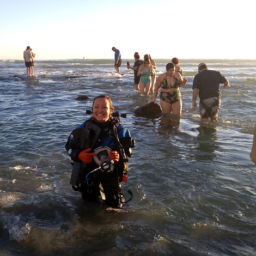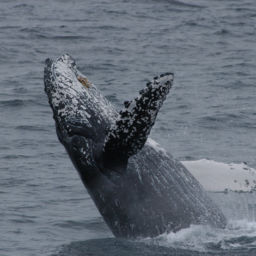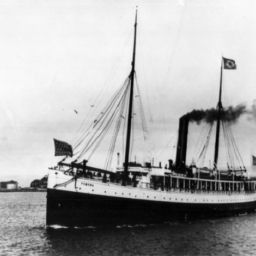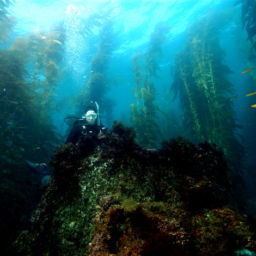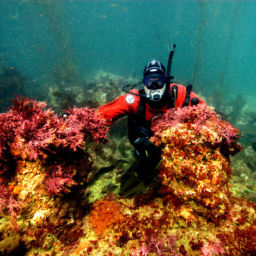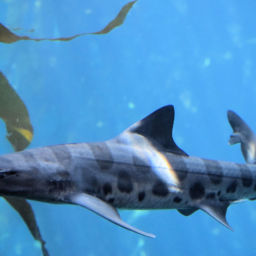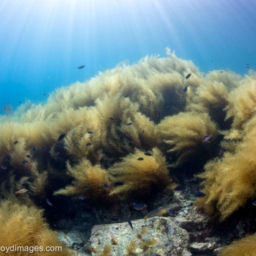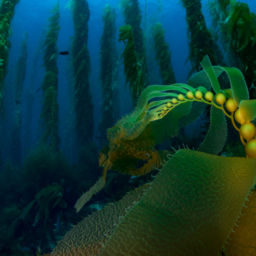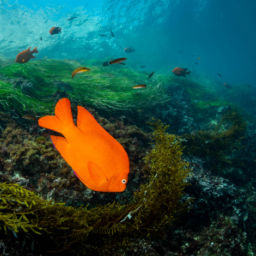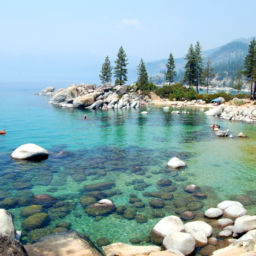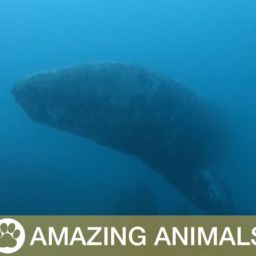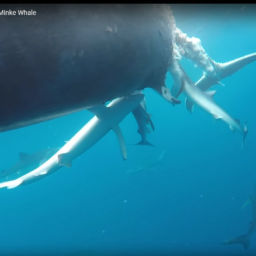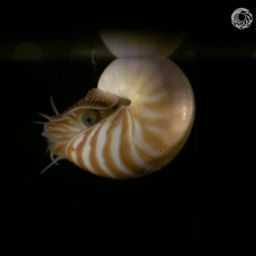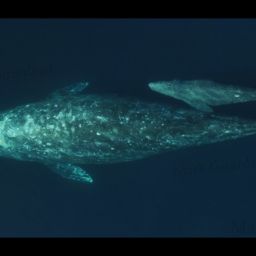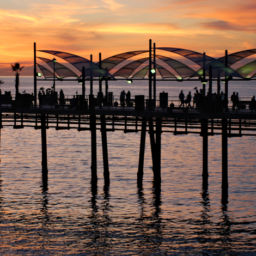The image of Southern California evokes sun, surf, and stars. But it’s time to add another “s” to that list: scuba. The scuba diving in San Diego is world-class, and it’s the perfect base from which to explore all the offshore offerings.
Scuba diving in San Diego
San Diego is located about 20 miles (30 km) north of Tijuana, Mexico. The area is home to one of the largest U.S. naval bases, the 2,000-acre Torrey Pines State Natural Reserve. On land, there’s the 1,200-acre Balboa Park, which encompasses museums, theaters, music venues and a famous zoo. All of this — plus year-round mild weather and lively nightlife — combine to recommend San Diego to almost any traveler.
And then there’s the scuba diving in San Diego. The 6,000-acre Matlahuayl State Marine Reserve (more commonly called the La Jolla Underwater Park), just north of San Diego’s city center, features everything from kelp forests to an underwater canyon and wrecks. Beyond almost-guaranteed sightings of the endemic Garibaldi, visitors can dive with harbor seals and sea lions, leopard sharks, sevengill and horn sharks. There’s also a dizzying variety of crustaceans and nudibranchs.
The visibility is best from July to January. For the calmest seas, visit from August to October. Water temperatures range from 59 to 72 F (15 to 22 C) on the surface and from 50 to 56 F (10 to 13 C) at depth. Divers will want a 7-mm wetsuit, hood and gloves at the very minimum for exposure protection; dry suits are more comfortable year-round.
Conditions can get rough, especially in winter, so always check with a lifeguard station or local dive shops before planning a dive.
La Jolla Cove
San Diego diving is famous for its kelp forests, and one of the best such dives is La Jolla Cove, a shore dive. The site’s entry is at the bottom of a bluff, down two flights of stairs from the road to a small, sandy beach. It’s best to descend near an impishly meandering buoy, about 165 feet (50 m) from shore. If you’re in doubt about where to descend, just line yourself up with the San Andreas fault, as evidenced by a huge crack in the hillside.
Descend and swim away from shore, through the enchanted forest of kelp. Garibaldi glow in the dusky gloom of the forest like lightning bugs. Along the rocky bottom, step-like formations hide lobsters in congregations from three to dozens. A moving rock among the sea stars is probably an octopus. If conditions are murky — visibility can shrink to a foot or two — you might suddenly find yourself face-to-face with a 6-foot sevengill or less alarming 3-foot horn shark, depending on the time of year. Returning towards the shallows, playful sea lions and harbor seals might nip and your fins or your camera.
Because the Cove is relatively protected, you may be able to dive here even if other local sites are too rough. Check with the on-site lifeguard station or local dive shops for advice.
La Jolla Shores
North of downtown La Jolla, La Jolla Shores is a popular mile-long beach. For scuba divers, it’s the ideal entry point to explore La Jolla Canyon.
Beyond the break, descend and follow the sloping sand. Watch for rays, guitarfish and even angel sharks in the sand. If you visit from late July through September, you’re likely to see dozens of (mostly female) leopard sharks, which gather here every summer to incubate their young.
Eventually you’ll reach the edge of a drop-off, which plunges 600 feet (180 m) into the canyon. Along both the rim and the wall, rocks, hard coral, seagrass and strands of kelp host everything from octopus, crabs and sheepshead to pipefish, blennies, and a magical assortment of nudibranchs.
While the shallow beach entry is usually easy, during the winter months the waves can get a bit too rough. Check with a lifeguard station or other dive shops for advice.
Point Loma
La Jolla sits on land that juts into the Pacific, sheltering its dive sites from the cold waters of the open ocean. South of La Jolla, the Point Loma kelp beds enjoy no such protection. However, colder water and ocean exposure mean more nutrients, attracting and supporting a wider range of marine life than the sites further north.
A short boat ride from shore, the soaring kelp forests of Point Loma dive sites are home to bass, treefish, kelpfish, the ever-present Garibaldi and an astonishing variety of nudibranchs. Along the bottom, the rocky reef hides crabs, lobsters, moray eels, and even more nudis. An array of sponges, tunicates and gorgonians provide color.
Dives generally start around 45 feet and bottom out around and 120 feet (14 to 36 meters). Between the depth and abundant kelp, even mid-day dives can get dark. Don’t forget to bring along a dive torch.
Wreck Alley
Wreck Alley is an artificial reef that sits a few miles off the coast of Mission Beach, itself halfway between La Jolla and Point Loma. While the Alley features eight ships and other structures, the two most popular are the HCMS Yukon, a Canadian destroyer, and the Ruby E, a 165-foot (50 m) Coast Guard cutter.
Higher-than-expected seas sank the Yukon, formerly a Canadian destroyer, the night before planned. For this reason, it lies on its port side at 100 feet (30 meters) – not ideal for beginner wreck divers. That said, it does offer plenty of entry and exit holes cut specifically to allow safe access for wreck-certified divers. Surge and current are common, so it’s nice that there is plenty to explore along the 366-foot (112 m) exterior as well.
Both the forward and aft gun turrets are intact, and there are plenty of openings to peek into. Waving anemones cover every surface — colorful corynactis and poufy metridiums —both of which sound and look like they were pulled from a Dr. Seuss book. Even if you don’t penetrate the wreck, the average minimum depth is 75 feet (23 m). So watch your air and deco time.
By contrast, the Ruby E, purpose-sunk in 1989, is an easier dive. It’s a shallower (60 to 85 feet/18 to 26 m), smaller wreck, with an open bridge and wheelhouse suited to beginners. A gaping hole where the engine hatches used to be offers a clear view of the engines left in place when it sank. Any deeper penetration is slightly more hazardous. Sharp metal edges abound inside this old, deteriorating structure, now festooned with strawberry anemones. Greenlings, gobies, blacksmith, surf perch and California scorpionfish adorn its decks.





